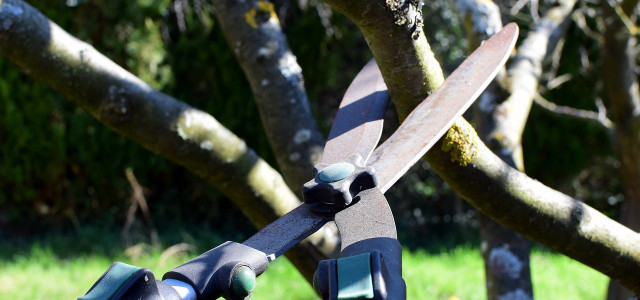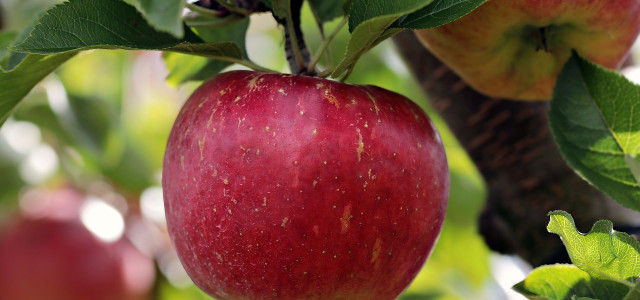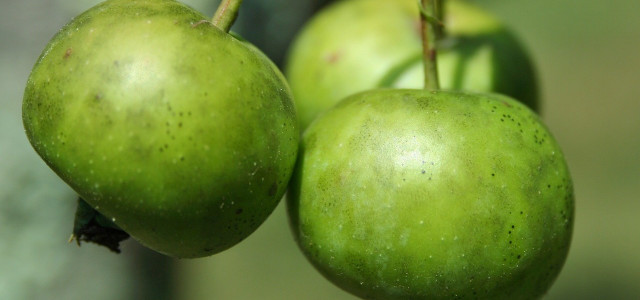Looking for a way to optimize the appearance and health of your tree? Learning how to prune apple trees is an essential horticultural tool.
Not only is pruning an aesthetic choice for many gardeners, but it can help to promote the yield of your apple tree, allowing you to get more bounty at the end of a season. Learning the best way to prune can seem like a bit of an art form. But by carefully adjusting your technique, you can provide the best outcomes for your tree’s growth, ensuring high quality and ample fruit development.
Pruning is designed to take into account many factors that the tree needs to succeed, such as cultivating more space, light, and airflow – all of which can significantly affect yield. Research has shown that with proper pruning, you can improve fruit yield by as much as 36.3%. Wondering how to prune apple trees? We’ve got you covered with four simple steps.
1. Assess the Tree’s Growth and Health

(Foto: Utopia / Aisha Williams)
Before jumping into the cutting and trimming, take a moment to look at how your tree is progressing. According to research by the University of Minnesota and California, there are a few different aspects you can check:
- Check the leaves for signs of discoloration, spots, or deformities.
- Look for any signs of damage or disease on the bark. Damage can be caused by animals, mechanical injuries, or environmental stress.
- Inspect the tree’s canopy for overall health and density.
- Check the soil around the tree for proper drainage and nutrition. If the soil is too wet or too dry, it can cause stress to the tree. If the tree is lacking in certain nutrients, fertilization can help improve growth and fruit production.
- If there are other plants growing near the tree, they may be competing for resources and need to be removed.
- Inspect the tree for signs of pests or fungus. Just keep in mind it’s important to correctly identify the pest before taking action, as some insects can be beneficial to the tree.
By stopping to inspect your tree, it may help to highlight the various work that needs to be done as well as any issues that you might need to be aware of.
2. Remove Dead, Diseased, or Damaged Wood
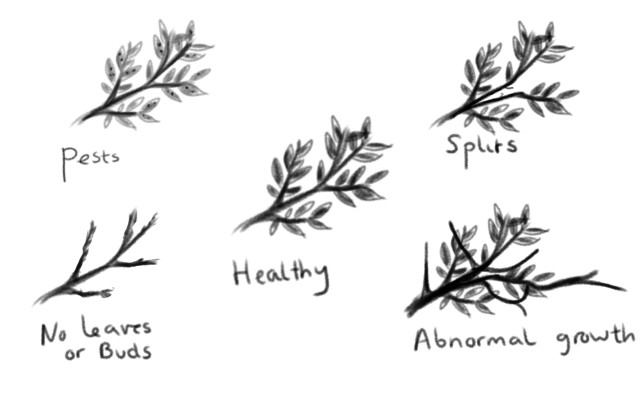


(Foto: Utopia / Aisha Williams)
It is important to remove dead, diseased, or damaged wood from fruit trees to maintain the tree’s health and productivity. Dead wood can attract pests and diseases, which can spread to healthy parts of the tree. Diseased or damaged wood can also affect the tree’s growth and fruit production.
The University of Kentucky advises identifying dead, diseased, or damaged wood by looking for branches that have no leaves or buds, have discoloration or abnormal growth patterns, or have physical damage such as cracks or splits.
To remove dead, diseased, or damaged wood, start by using a pair of sharp pruning shears or a pruning saw to make clean cuts at the base of the affected branch or limb. When making the cut, be sure to remove the entire affected area and avoid leaving any stubs or jagged edges, which can invite pests and disease. If the affected area is large, it may be necessary to make multiple cuts to avoid tearing the bark or damaging the tree further.
3. How to Prune an Apple Tree: Thin Out Overcrowded Branches
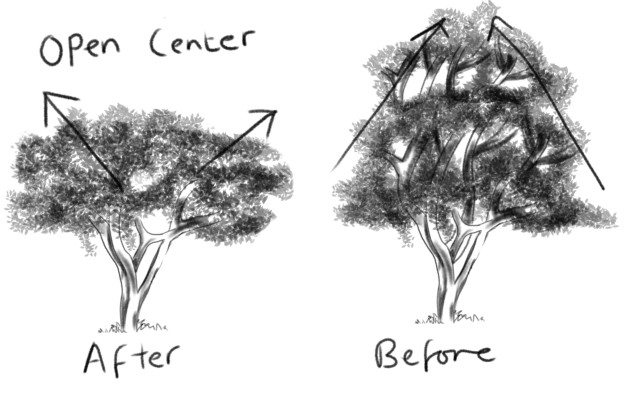


(Foto: Utopia / Aisha Williams )
The open center tree pruning method is used for thinning out overcrowded branches and improving air circulation and fruiting. An open center allows sunlight and air to penetrate the tree’s canopy, which helps fruit ripen evenly and reduces the risk of disease. Thinning out overcrowded branches also reduces the competition for resources, such as water and nutrients, among the branches.
To create an open center to the tree and thin out overcrowded branches, begin by removing any branches that are crossing or rubbing against each other, as well as any branches that are growing inward towards the center of the tree. Look for branches that are crowded and remove some of them to create space in the canopy.
Then, use pruning shears or a pruning saw to selectively remove some of the remaining branches, taking care to maintain an overall balanced shape and structure. When making the cuts, be sure to avoid leaving any stubs or ragged edges, which can invite pests and disease. But avoid removing more than one-third of the tree’s canopy.
4. Prune for Size Control and Shape
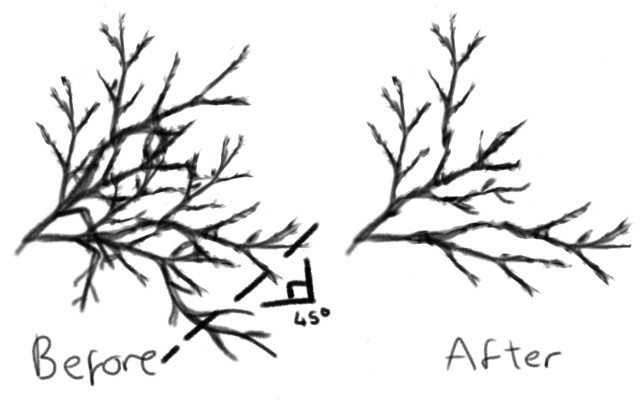


(Foto: Utopia / Aisha Williams )
Pruning can be used to control the size and shape of a fruit tree. It is important to maintain the tree’s overall shape to promote healthy growth and fruit production. Pruning also helps to remove unwanted branches that may be interfering with the tree’s growth or fruiting.
To control the size and shape of the tree, begin by identifying any branches that are growing too long or in undesirable directions. Use pruning shears or a pruning saw to make staggered cuts throughout the canopy, removing only a portion of each branch at a time to avoid removing too much foliage at once – this can stress the tree and reduce fruit production.
For larger branches, use the three-cut method: make a small undercut on the underside of the branch, then make a second cut a few inches further out on the top side of the branch to remove the weight, and finally make a third cut just outside the branch collar to remove the remaining stub.
How to Prune Apple Trees: Key Tips
One of the most important things to remember when pruning is to make clean cuts. Leaving stubs can damage the tree and increase the risk of pests and diseases.
To make clean cuts and avoid leaving stubs, use sharp pruning shears or a pruning saw to make precise cuts at a 45-degree angle, just above the branch collar. The branch collar is the slightly raised area where the branch meets the trunk, and it contains specialized cells that help the tree heal after the cut.
By making the cut just above the branch collar, you allow the tree to heal quickly and avoid leaving any stubs that can become infected with pests or diseases. Make sure to clean your pruning tools between cuts to prevent the spread of disease. With care and attention, gardeners can enjoy healthy, fruitful apple trees for years to come.
Read more:
- How to Prune Orchids for Better Growth in 5 Steps
- Make These Baked Apples in the Oven for a Cozy Night In
- The 5 Best Free Tree Identification Apps
Do you like this post?






